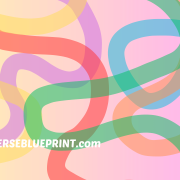Unlock the Best Way to Visualize Money: Expert Tips and Techniques
What is the Best Way to Visualize Money?
Managing money effectively often hinges on our ability to visualize it. Visualization techniques can transform how we perceive and handle our finances, making the abstract concepts of money more tangible. This article explores the best ways to visualize money, offering a range of strategies to improve your financial literacy and management skills.
Introduction
Money management is a crucial skill that impacts every aspect of our lives. However, many people struggle with understanding where their money goes and how to control their finances effectively. Visualization techniques can bridge this gap by providing clear, understandable representations of financial data. By making money more visible, we can make better financial decisions and achieve our financial goals more effectively.
The Importance of Visualizing Money
Visualizing money helps in several ways:
- Clarifies Financial Data: Turning numbers into graphs, charts, and other visual aids makes complex data easier to understand.
- Tracks Spending Habits: Visualization can highlight where your money is going, helping you identify unnecessary expenditures.
- Improves Budgeting: Visual tools can help you create and stick to a budget by clearly showing your income, expenses, and savings.
- Motivates Savings: Seeing your savings grow in a visual format can be highly motivating.
Using Financial Charts and Graphs
Pie Charts: Pie charts are excellent for showing how different parts of your budget compare to each other. They can illustrate the proportion of your income that goes towards rent, groceries, entertainment, and savings.
Bar Graphs: Bar graphs can track changes over time, such as monthly expenses or income growth. They are great for comparing different categories of spending.
Line Graphs: Line graphs are useful for showing trends, such as your savings over a year. They can help you see progress and plan for future financial goals.
Budgeting Tools and Apps
There are numerous apps designed to help you visualize your finances:
- Mint: Mint is a popular app that offers comprehensive financial tracking. It provides detailed graphs and charts showing your spending, budget, and financial goals.
- YNAB (You Need A Budget): YNAB focuses on proactive budgeting and offers robust tools to help you visualize your financial status and plan accordingly.
- Personal Capital: Personal Capital offers investment tracking along with budgeting tools, giving you a complete picture of your financial health.
Creating a Financial Dashboard
A financial dashboard is a personalized visualization tool that consolidates all your financial information in one place. It can include:
- Net Worth Tracker: Shows your assets and liabilities over time.
- Budget Overview: A detailed look at your budget categories and spending.
- Goal Progress: Visual representations of your progress towards financial goals like saving for a vacation or paying off debt.
The Role of Spreadsheets
Spreadsheets are versatile tools for visualizing money. With programs like Excel or Google Sheets, you can create custom charts and graphs that reflect your financial data. Spreadsheets can be tailored to your specific needs, offering flexibility that many apps do not.
Visualizing Debt Reduction
Debt can be overwhelming, but visualizing your repayment plan can make it more manageable:
- Debt Snowball Method: Create a bar graph showing each debt and update it monthly to track your progress.
- Debt Avalanche Method: Use a line graph to prioritize debts by interest rate and visualize your repayment schedule.
The Psychological Benefits of Visualizing Money
Visualizing money can also have psychological benefits. It can reduce anxiety by making your financial situation clearer and more predictable. Seeing tangible progress towards financial goals can boost your confidence and motivation.
Case Studies: Success Stories
John’s Journey to Debt-Free Living: John used a combination of bar graphs and the debt snowball method to pay off $20,000 in debt within two years. Visualizing his progress kept him motivated and accountable.
Emma’s Savings Success: Emma set up a savings goal dashboard using a spreadsheet. By tracking her progress visually, she was able to save for a down payment on a house in just three years.
FAQs
What is the best way to visualize money? The best way depends on your preferences and needs. Popular methods include using budgeting apps, creating financial dashboards, and employing spreadsheets for custom visualizations.
How can visualizing money help with budgeting? Visualization tools can highlight where your money is going, making it easier to adjust your budget and control your spending.
What are some good apps for visualizing money? Mint, YNAB, and Personal Capital are all excellent choices for visualizing your finances.
Can visualizing money help me get out of debt? Yes, visualizing your debt repayment plan can make the process less daunting and help you track your progress more effectively.
How can I create a financial dashboard? You can use spreadsheet programs like Excel or Google Sheets to create a personalized financial dashboard that tracks your income, expenses, and savings goals.
What types of charts are best for tracking expenses? Pie charts are great for showing the proportion of your budget categories, while bar and line graphs can track changes in expenses over time.
Conclusion
Visualizing money is a powerful tool for better financial management. Whether you use apps, spreadsheets, or create a financial dashboard, the key is to find a method that works for you. By making your finances more visible, you can take control of your money, reduce financial stress, and achieve your financial goals more efficiently.
Ready for a money mindset makeover? Start your journey to financial freedom today.










Leave a Reply
Want to join the discussion?Feel free to contribute!